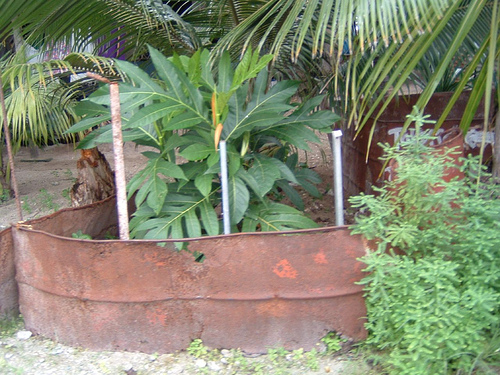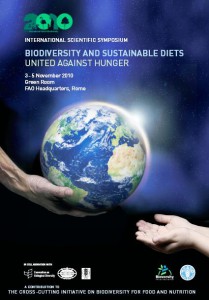- Concentrating management practices on conserving a particular plant species may have bad consequences for other bits of biodiversity. Lessons for crops wild relatives?
- Benin’s farmers ennoble wild yams.
- A Lebanese lunch is an educational experience. Right.
- Paddyomics video. Nothing to do with the Irish. It’s about how IRRI is automating, er, everything about its phenotyping.
- Tamarind’s environmental niche is, in fact, er, niches?
- Different wheat genomes generate distinct protein profiles.
- Phylogenetic relationships of a new Mediterranean lupin.
- Betel nut chewing endangers coral. Kinda. Traditional and all that, but an unpleasant habit nonetheless.
- Our friend Bhuwon and others tell the story of the participatory improvement and formal release of Jethobudho rice landrace in Nepal.
- CGIAR elicits comment on the Agriculture for Improved Nutrition and Health megaprogramme. Until August 1.
- Bacterial diversity boosts maize yields.
Ripe breadfruit blown from a tree in a storm
The final paragraph of The Economist’s obituary of Mau Piailug, Pacific navigator and culture hero:
In 2007 the people of Hawaii gave him a present of a double-hulled canoe, the Alingano Maisu. Maisu means “ripe breadfruit blown from a tree in a storm”, which anyone may eat. The breadfruit was Mau’s favourite tree anyway: tall and light, with a twisty grain excellent for boat-building, sticky latex for caulking, and big starchy fruit which, fermented, made the ideal food for an ocean voyage. But maisu also referred to easy, communal sharing of something good: like the knowledge of how to sail for weeks out on the Pacific, without maps, going by the stars.
And like plant genetic resources, including breadfruit, perhaps. Anyway, a good word to know, maisu. Pacific people really take care of their breadfruit trees, incidentally. I took this photo in Kiribati a few years back.

Announcing a symposium on Biodiversity and Sustainable Diets
 The first announcement and call for abstracts for the International Scientific Symposium on Biodiversity and Sustainable Diets is out. The symposium will take place 3-5 November 2010 at FAO Headquarters, Rome. But that’s all I know because the link to the announcement on FAO’s website is broken. (I’m writing this on Saturday: hopefully they’ll fix it on Monday.)
The first announcement and call for abstracts for the International Scientific Symposium on Biodiversity and Sustainable Diets is out. The symposium will take place 3-5 November 2010 at FAO Headquarters, Rome. But that’s all I know because the link to the announcement on FAO’s website is broken. (I’m writing this on Saturday: hopefully they’ll fix it on Monday.)
Wednesday: The link now goes to a Word document.
Nibbles: Grain ID, Garlic ID, Funding, Pest control, Sorghum, Grains, Cowpeas
- How to identify small grains.
- Can you identify a garlic?
- “You can’t expect a starving person to save a tree.” I s’pose not. But is that any reason to endow a chair in conflict resolution and development?
- “A farmer needs to let the garden get wild in order to protect it from the wild.” Course she does.
- Sorghum a huge success in Kitui, Kenya.
- Field trip to a grower of old grain varieties.
- New cowpea varieties selling like hotcakes, FARA told. And the old cowpeas?
Featured: Nabateans
William, commenting on Nabatean agriculture, raises a much more widely applicable point:
What isn’t eatable to us humans sheep and goat often find palatable.
Crucially important in considering agricultural biodiversity.